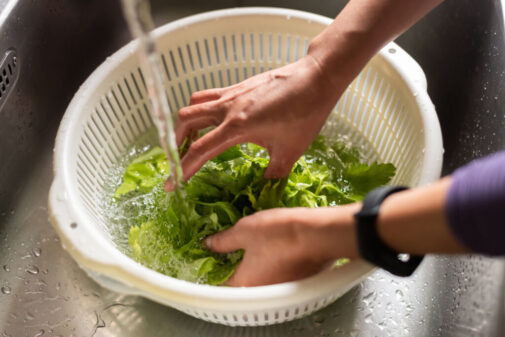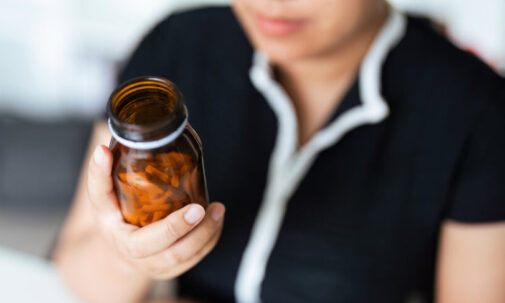How should you wash fruits and vegetables?

The FDA estimates almost 48 million people get sick from contaminated food. Fresh produce can become contaminated during growing, harvesting, inadequate storage or food prep.
“That’s why it’s so important to clean your fruits and vegetables before eating, cutting or cooking it,” says Pamela Voelkers, a dietitian and integrative health coach from Aurora Health Care. “And there’s a proper way to do it that’s simple and effective.”
Voelkers shares these tips:
- Wash your hands, kitchen utensils, cutting boards and countertops with warm water and soap BEFORE and AFTER preparing fresh produce.
- Examine produce and remove any damaged or bruised areas. Remove outermost leaves of lettuce or cabbage.
- Clean the produce, including those you plan to peel.
- Rinse under cool, running water while gently rubbing.
- For firm produce, such as potatoes, melons and cucumbers, scrub with a clean vegetable brush BEFORE peeling, as dirt or germs on the peel can get inside when you cut them.
- There’s no need to use soap or a produce wash.
- There’s no need to wash bagged or packaged fruits and vegetables that are labeled prewashed.
“Both the FDA and CDC do not recommend washing fruits and vegetables with soap or produce wash, because residues from the cleaning product can stay on the produce,” Voelkers says. “And, manufacturers follow strict processes to package prewashed, ready-to-eat fruits and veggies. Washing this produce can actually increase the chances of contaminating it because you’d be handling it more and touching more surfaces like the sink.”
Take a free online quiz to learn more about your healthy weight range.
Related Posts
Comments
4 Comments
About the Author
Mary Arens, health enews contributor, is a senior content specialist at Advocate Health Care and Aurora Health Care. She has 20+ years of experience in communications plus a degree in microbiology. Outside of work, Mary makes healthy happen with hiking, yoga, gardening and walks with her dog, Chester.


















How do we get the wax off of apples, peppers, cucumbers?
Wax is nutritionally negligible. The human body has no enzymes to break it down into smaller molecules to use as dietary fat and it is 100% invisible to the human body; it passes through the gut with all the undigestible cellulose and leaves the body without a trace. What is used in agriculture and at groceries is designed specifically for this use; even labels on fruits and vegetables have to contain non-toxic and edible dyes so that they have no affect when accidentally consumed.
I would not recommend focusing any energy on getting the wax off; you’re more likely to damage the skin of the fruit or contaminate it with a wash you don’t want just trying to get it off.
If you’re cooking, you can get some of the wax off by parboiling the whole fruit but you’d have to put the whole thing in an ice bath after and this again is going to be a process that’s isn’t really worth it. If you plan on storing your fruits and vegetables this won’t do anything but shorten the shelf life by again damaging the skin and as long as your produce is washed it 100% does not matter if the wax stays on the items you’re cooking even when incorporated into a dish.
When making caramel apples on the other hand, parboiling is an important step since the caramel needs to stick and the apple will be impaled. Caramel apples should have a shorter shelf life than an intact apple though I’d say at around 2-3 days tops. That’s about the only exception I can think of.
Wax still tastes disgusting. Haven’t bought a store cucumber in over 10 years bc of the wax.
How about cleaning your berries with a little water and vinegar, to also preserve the berries?